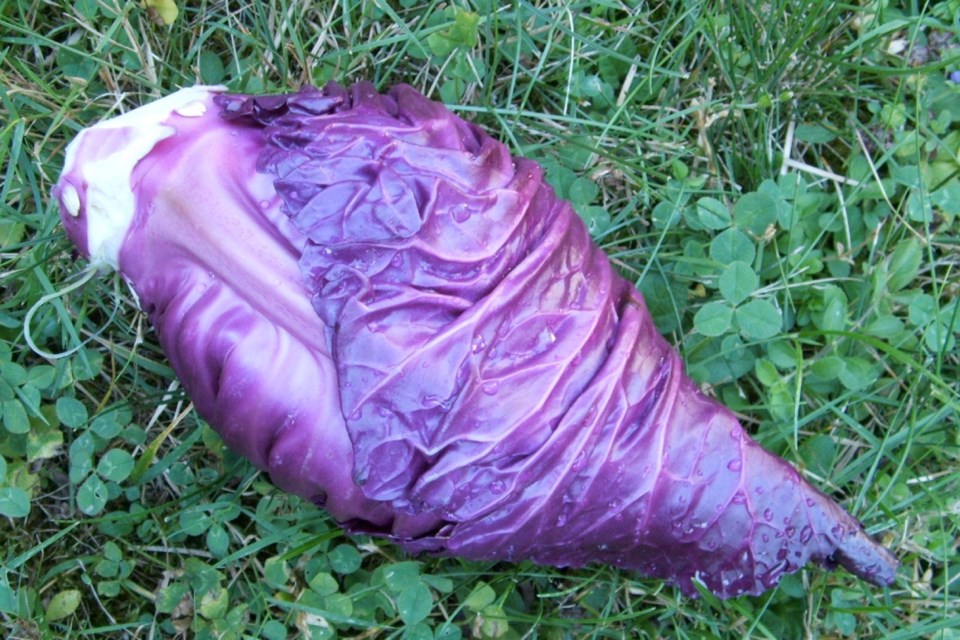Dear Helen: A few stems on a young clematis vine collapsed, just as flowering had begun. Why, and what should I do?
D.L.
This is clematis wilt, a condition that is most often the result of poorly drained soil, over-watering, or/and limited air circulation around and through the plant. Sometimes, but not always, a fungus fostered by these conditions is involved.
The remedy is to immediately remove and destroy affected stems, making the cuts at least 2.5 centimetres beneath the wilted portions. The stem collapse begins at the shoot tips. Avoid over-watering and over-fertilizing with nitrogen.
Clematis vines need a cool, moist but well-drained and deep root run.
It’s worth noting that clematis wilt almost never afflicts the small-flowered and least hybridized kinds of clematis. These include the spring-flowering montanas and alpinas and summer-flowering viticellas. Clematis viticella varieties flower all summer and are wonderfully easy to grow.
Dear Helen: I remember your discussing in a column how you buried your kitchen compost in the garden. Please remind me how you do it. Our soil needs improvement.
L.B.
I keep a small bin beside the kitchen sink to receive vegetable and fruit trimmings and also emptied paper coffee filters. The used coffee grounds (and tea leaves) from the emptied filters go into a separate container for spreading (thinly) under acid-loving plants like blueberries, rhododendrons and azaleas.
When the larger bin is full, I dig holes, as deep as I can make them, empty the contents into the hole and cover it over, firming the soil down well. In gardens frequented at night by raccoons, a deep hole and a firmed-down soil are especially important. Another precaution, to be taken if necessary, is to lay a piece of wire mesh or a board over the covered hole.
Where you dig the holes depends on the plantings you have, the season, and the nature of the garden. An old English tradition is to dig a trench (or trenches) 20 to 30 cm deep to receive kitchen trimmings that are covered with soil but not to the trench top. This is usually done from fall through winter. In spring, more soil is added, to an appropriate planting depth, and the trench is used for planting potatoes.
This trench composting could also be used, with a series of trenches, to simply prepare a plot needing a fertility and moisture retention boost for spring planting of other things.
Once my two double rows of peas, which I grow against lengths of chicken wire, are up and growing I dig the trimmings in between the rows. Now, globe artichoke plants that have yielded and abundance of their delicious treats are getting a nutritional treat from trimmings dug in around the plants.
Because vegetable and fruit matter from the kitchen breaks down quickly into a spongy, moisture-retaining mass when buried, I look for plants that are particularly greedy for moisture and nutrients, and areas where the soil is difficult to keep moistened in the summer, for this on-site composting.
Dear Helen: I’ve added compost to my raised beds for several years now. It’s made the soil nice and loose, and pleasant to work with, but it does not retain moisture. What can I add to help?
J.B.
Try coconut fibre, available at garden centres and other places where gardening supplies are sold. I’ve noticed a significant difference in the moisture retaining capacity of the soil where I’ve prepared it for planting with coconut fibre along with compost and fertilizer. It’s helpful in container plantings too.
Firming the soil well over seeded rows (I use the flat of a hoe) and around transplants is especially essential in loose-textured soils.
This is important in plants that form “heads” like cabbages and Brussels sprouts.
GARDEN EVENTS
Garden picnic. The Horticulture Centre of the Pacific, 505 Quayle Rd. in Saanich, is hosting a Picnic in the Gardens event this evening from 5 to 8. Bring along a picnic and enjoy your meal in a beautiful setting while listening to live local music. Admission is by donation. Details at hcp.ca.
Government House nursery. The plant nursery at Government House, 1401 Rockland Ave. in Victoria, is open for public sales from 9 a.m. to 12 p.m. on Tuesdays and Thursdays through to Aug. 30. The nursery is located opposite the Tea Room.



